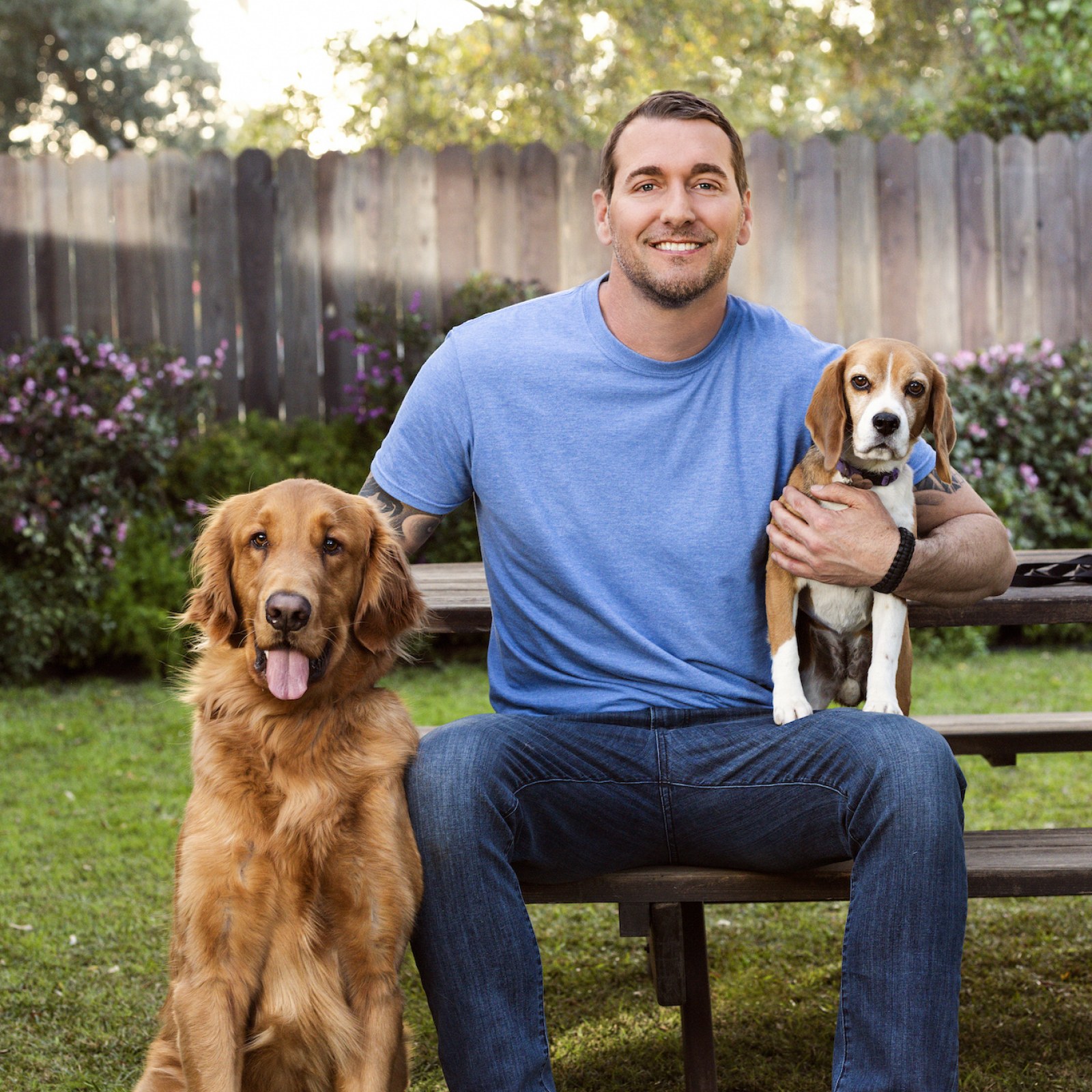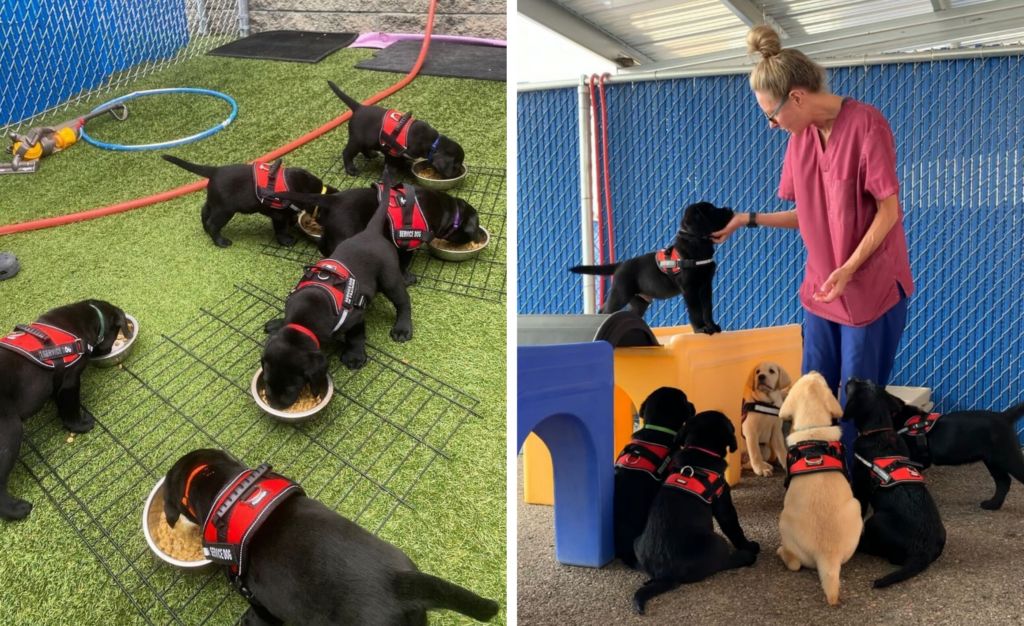Leading Canine Educating Techniques Every Owner Need To Know

Favorable Support Techniques
Making use of positive support methods is important for reliable dog training, as it fosters a trusting bond between the dog and the fitness instructor. This technique concentrates on gratifying desirable actions instead than penalizing unfavorable ones, developing an environment for discovering. Rewards can include deals with, appreciation, or playtime, which encourage pet dogs to duplicate the behaviors that gain them these incentives.

Moreover, this strategy enhances the canine's interest for training sessions. They are a lot more involved and receptive when dogs connect training with positive experiences. Dog training. Past instant behavior modification, favorable support urges a collective partnership between the dog and fitness instructor, reducing anxiousness and anxiety
To take full advantage of efficiency, it is important to supply rewards immediately, making certain the pet attaches the actions with the support. In essence, positive support strategies not just yield better-trained pets yet likewise promote a harmonious collaboration between canine and owner.
Remote Control Training Technique
The clicker training technique is an extremely efficient method that builds on the principles of favorable support by including a distinctive audio to mark wanted habits. This technique uses a tiny portable device that creates a clicking noise, enabling fitness instructors to communicate with their dogs in a clear and prompt fashion. When a pet dog does a behavior that the proprietor desires to encourage, the clicker is triggered, complied with by an incentive, normally in the form of treats or praise.
The secret to effective clicker training hinges on uniformity and timing. It is vital to click at the specific minute the wanted habits occurs, making certain that the dog links the audio with the activity and the subsequent incentive. This technique not only boosts interaction but also fosters a stronger bond in between the owner and the dog, as it urges interaction and interaction throughout training sessions.
Clicker training can be put on a range of actions and commands, from fundamental obedience to more intricate tricks. Its versatility and efficiency make it a favored strategy among expert trainers and pet dog owners alike, leading the way for a receptive and trained canine buddy.
Chain Training Essentials
Reliable chain training is necessary for making sure a delightful and safe walking experience for both canines and their proprietors. A level collar might work for some canines, while others may benefit from a harness browse around this site that minimizes drawing.
Introduce your canine to the leash progressively, permitting them to discover it in a comfy environment. Method loose-leash strolling once they are accustomed. This entails satisfying your pet for strolling close to you as opposed to drawing in advance. Usage deals with and appreciation to reinforce desired behavior, and be sure to remain calm and assertive.
If your dog begins to pull, quit strolling immediately. Wait till they return to your side before resuming. This educates them that pulling does not result in progress. Additionally, technique numerous strolling atmospheres to help your dog adjust to disturbances.
Normal method will strengthen your pet dog's understanding of leash decorum. Keep in mind that leash training is a recurring procedure; persistence and consistency will certainly yield the most effective outcomes, fostering a favorable experience for both you and your canine buddy.
Socialization Approaches
Socializing is an important aspect of pet training that must ideally start during puppyhood yet can be helpful at any age. Reliable socialization aids pets establish self-confidence and minimizes the possibility of behavior problems. To execute effective socialization methods, expose your pet dog to a variety of atmospheres, individuals, and other pets.
Start with controlled setups, such as puppy classes or organized playgroups, where young canines can connect safely. Slowly present your dog to new experiences, consisting of different noises, surface areas, and tasks. Ensure these encounters are positive and gratifying to develop a sense of safety.
For investigate this site grown-up pet dogs or those lacking exposure, begin with low-stress circumstances. Short, positive communications with calm dogs and friendly humans can create positive associations. Use deals with and praise to reinforce desirable behaviors during these experiences.

Uniformity and Persistence
Acknowledging the significance of uniformity and perseverance in dog training is important for accomplishing long-term outcomes. Inconsistent training can lead to complication, making it difficult for the pet dog to grasp commands or habits, inevitably preventing progress.
Pet dogs, like people, discover at their own speed. This promotes a relying on partnership between the dog and owner, urging a much more passionate and ready learner.
To cultivate consistency and perseverance, establish a regular training regular, use the same commands, and make certain that all relative apply the same training principles - Dog training. By doing so, you develop a stable setting favorable to finding out, permitting your canine to prosper and create right into a well-behaved buddy
Verdict
In verdict, efficient pet dog training techniques, such as favorable reinforcement, remote control training, and correct leash training, are essential for cultivating a healthy Continued owner-dog relationship. In addition, carrying out socialization strategies and preserving uniformity and persistence throughout the training process adds substantially to a pet's overall health. By integrating these approaches, canine proprietors can assist in the advancement of well-adjusted, obedient pet dogs, ultimately boosting the lifestyle for both the owner and the pet dog.
Among the most noticeable methods are favorable reinforcement, remote control training, and chain training, each offering special advantages that contribute to a mannerly dog. As we discover these fundamental approaches, it ends up being noticeable that mastering their subtleties can dramatically influence the training experience and the dog's total habits.Making use of positive support strategies is vital for effective canine training, as it cultivates a trusting bond in between the canine and the fitness instructor.In verdict, effective canine training strategies, such as positive support, clicker training, and proper leash training, are necessary for cultivating a healthy owner-dog partnership. By incorporating these techniques, dog owners can assist in the growth of well-adjusted, loyal pet dogs, ultimately enhancing the high quality of life for both the proprietor and the canine.
Comments on “How to Master Dog Training and Build a Stronger Bond with Your Pup”